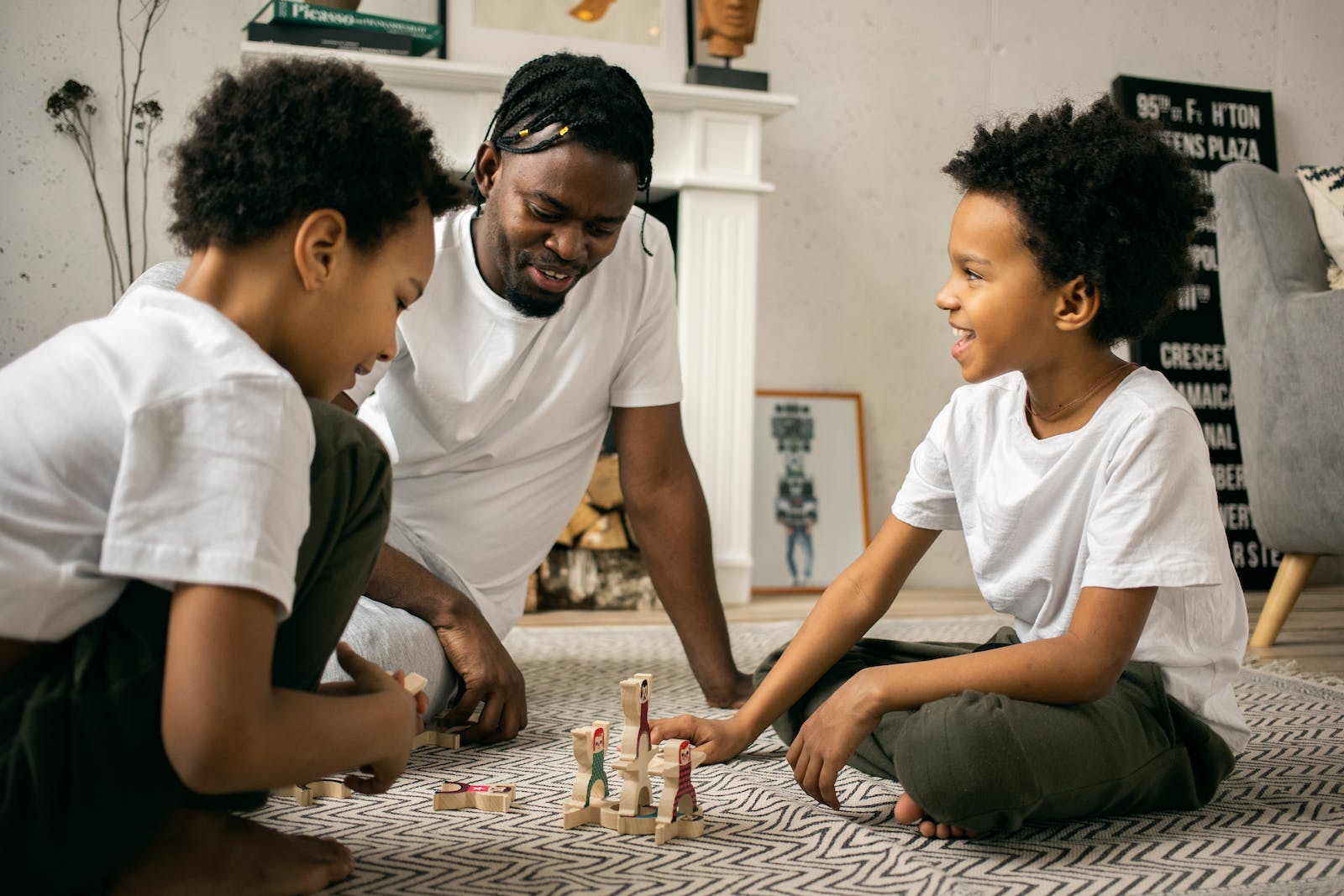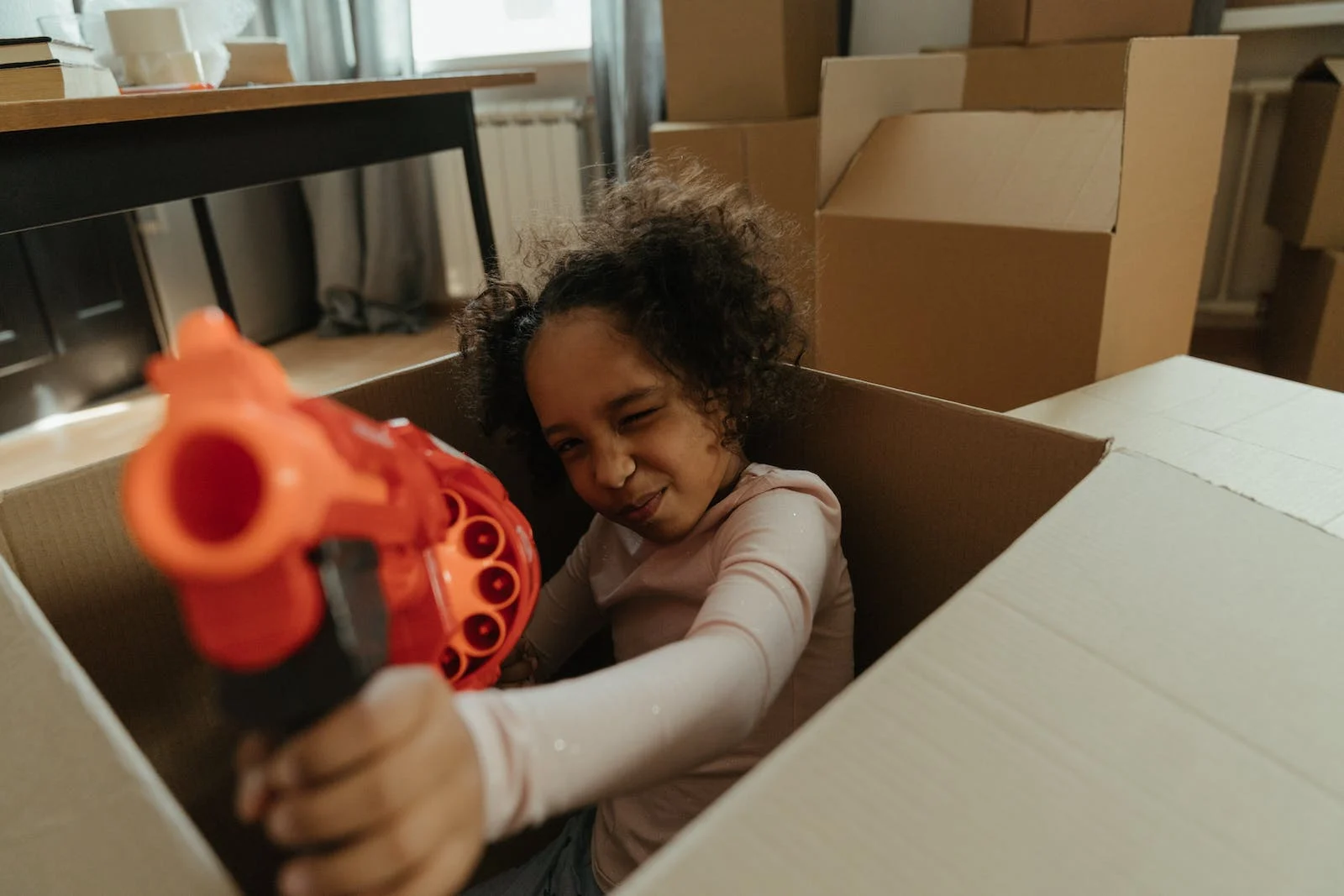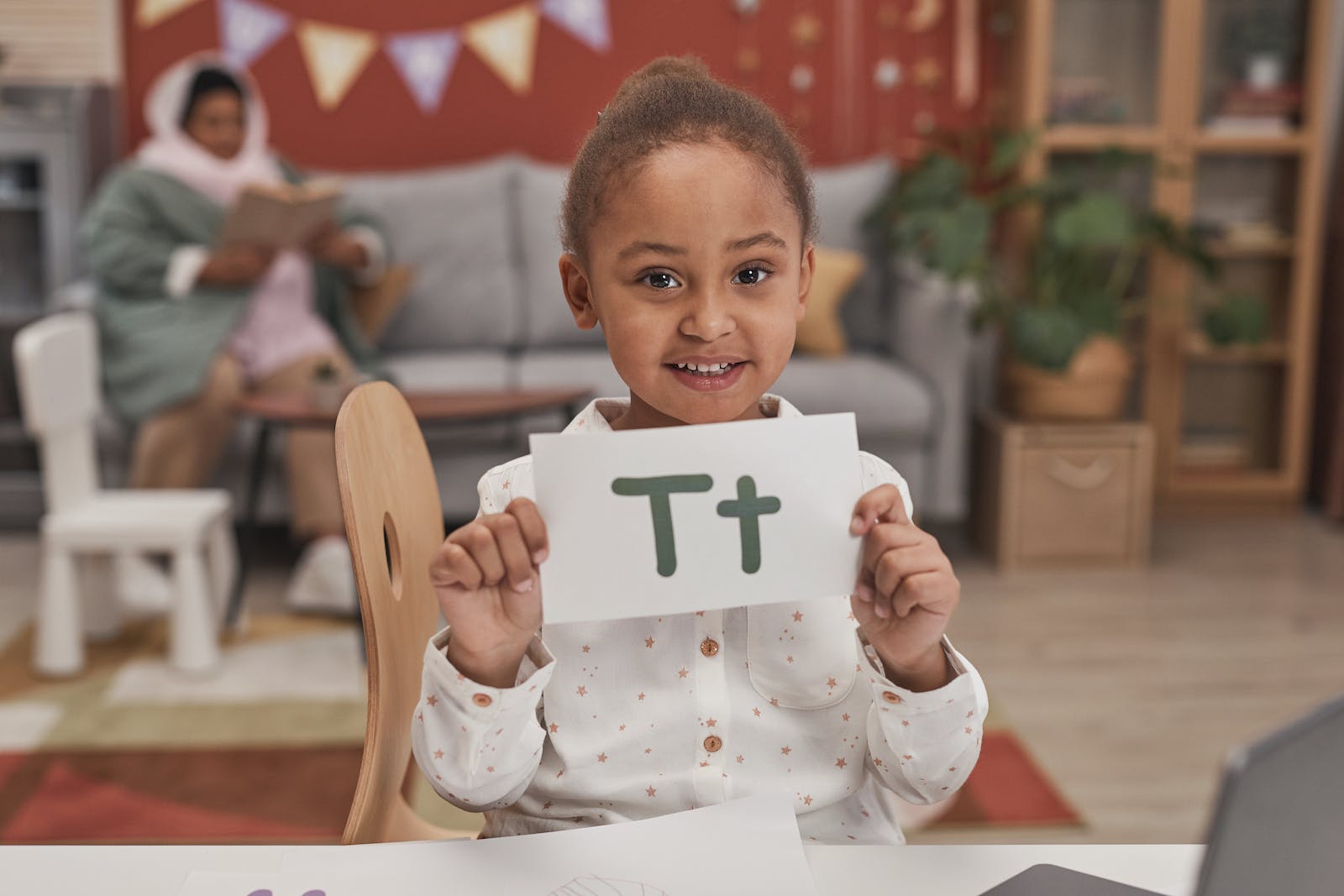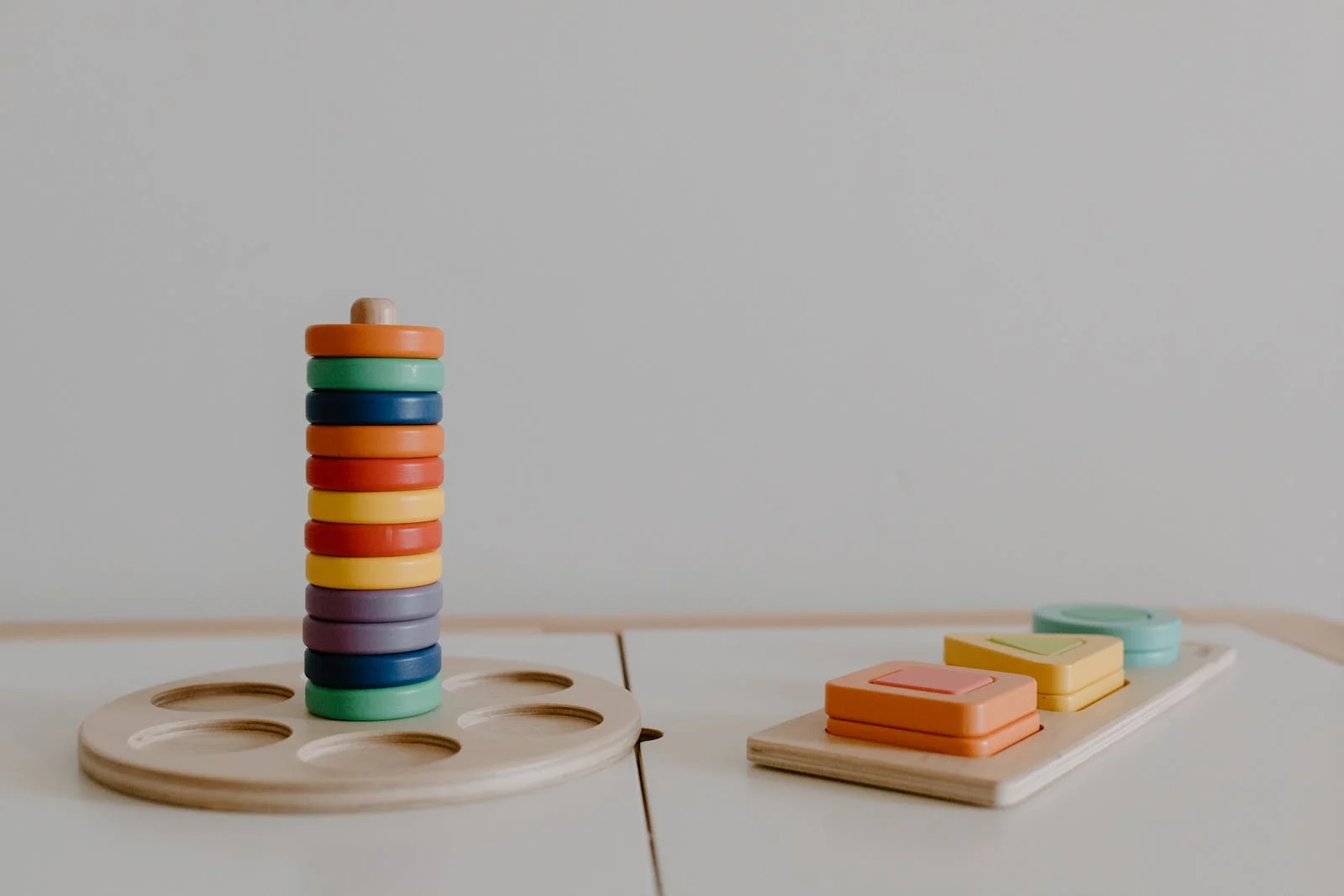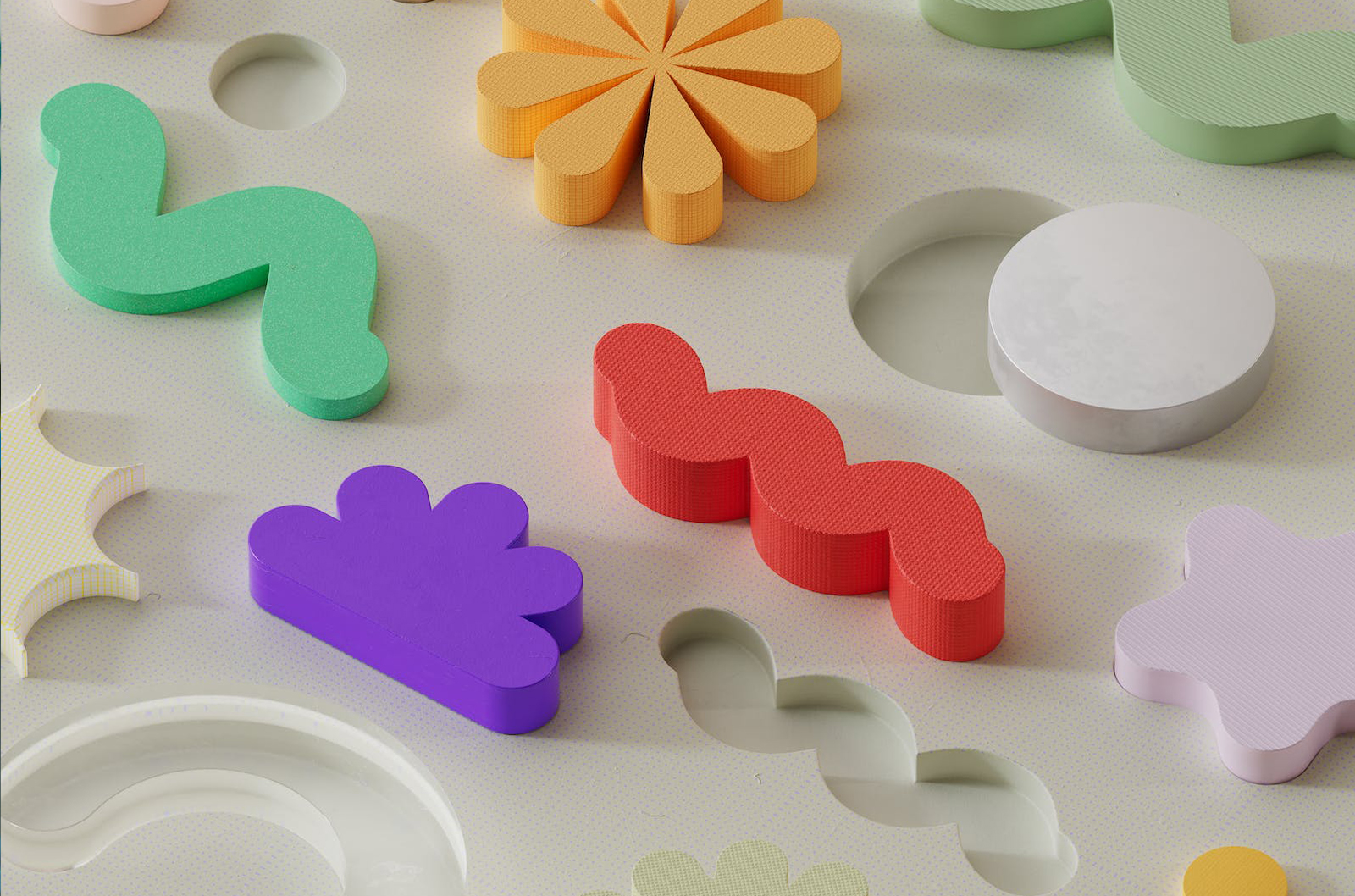- by Super Admin
- Sep 23, 2023
Fun Indoor Activities Appropriate for All Age Groups
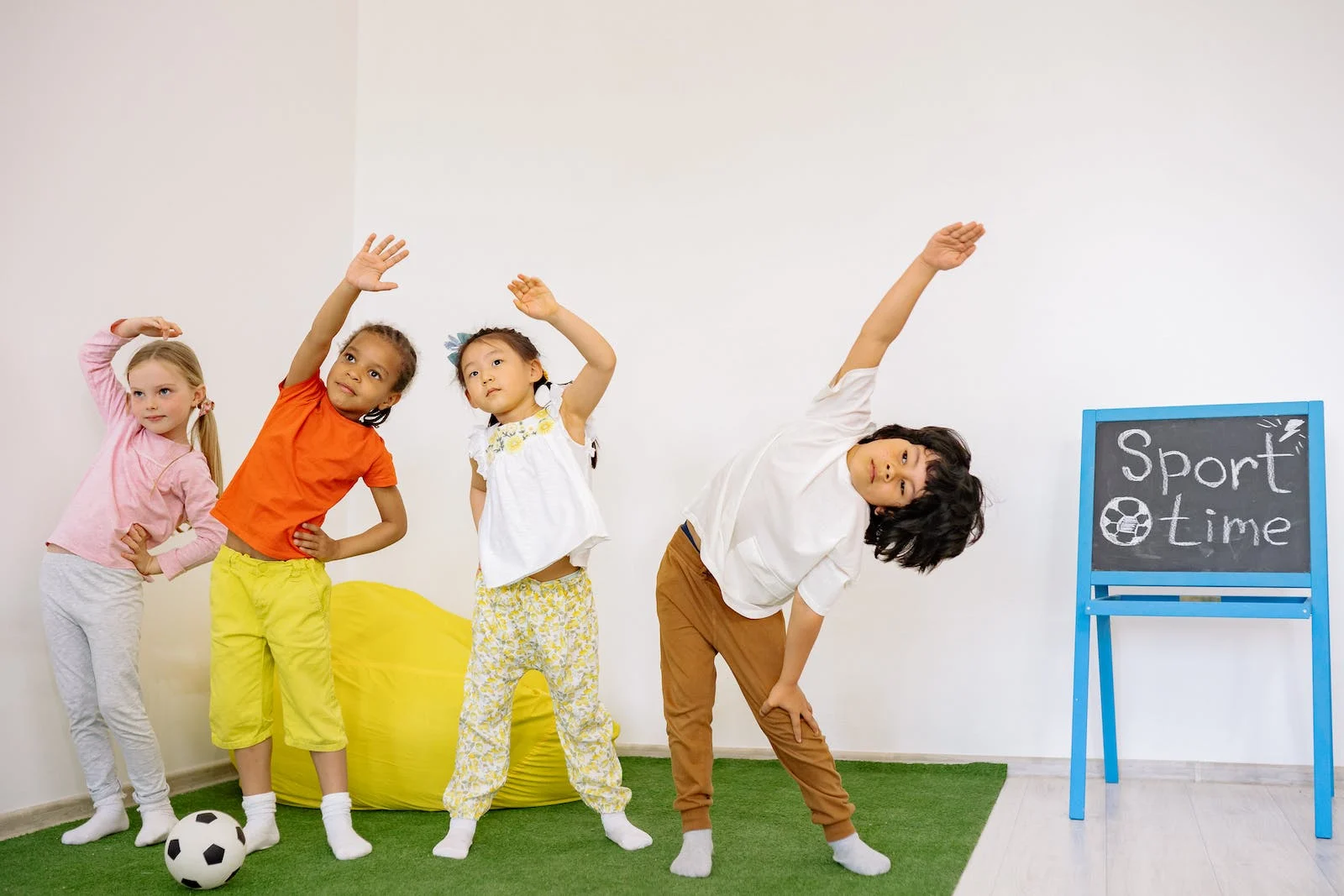
Creative Ideas for Indoor Recess
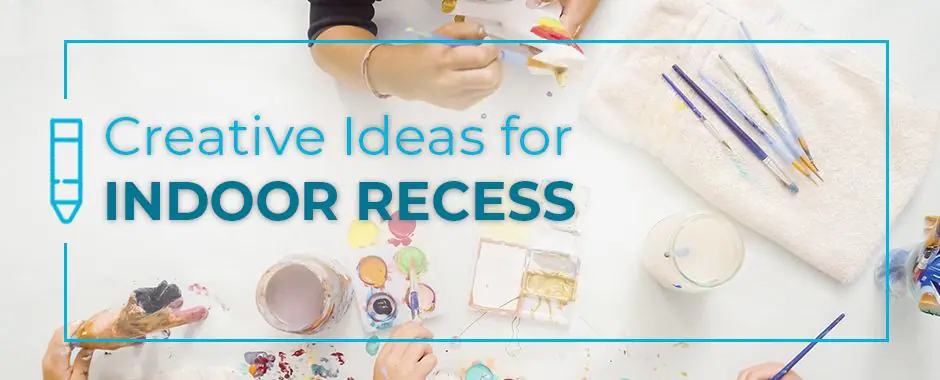
When rain pounds at the windows or a snowy freeze descends on the school, many teachers brace themselves for indoor recess.
Outdoor recess is beneficial for both students’ well-being and their classroom behavior. They can swing, slide, socialize and get their wiggles out in the great outdoors. Studies have shown that younger students who receive at least 20 minutes of recess time work more and display better behavior throughout the day. The change of scene refreshes their minds, and they return to the classroom invigorated and ready to learn.
When students are cooped up indoors, their boundless energy has nowhere to go, and the classroom can quickly transform into chaos. Thus, teachers find themselves looking for creative ways to keep students entertained — without letting classroom antics get out of hand.
Fortunately, with just a little work and creativity, indoor recreational activities can be fun while promoting learning. Kids develop teamwork skills, follow directions and hone their fine motor coordination through game playing and creative work.
Below you’ll find a list of stimulating classroom games and indoor activities for days when inclement weather keeps your students inside.
Read the full article or skip to a specific section:
- Activities Appropriate for All Age Groups
- Indoor Activities for Pre-K—Kindergarten
- Indoor Activities for Grades 1–2
- Indoor Activities for Grades 3-4
- Indoor Activities for Grades 5–6
- Have Fun With Indoor (and Outdoor) Recess!
Fun Indoor Activities Appropriate for All Age Groups
Whether you’re looking for preschool indoor recess games or fun activities for 6th graders, there’s a rainy day recreational activity for students of all ages.
1. Arts & Crafts Projects
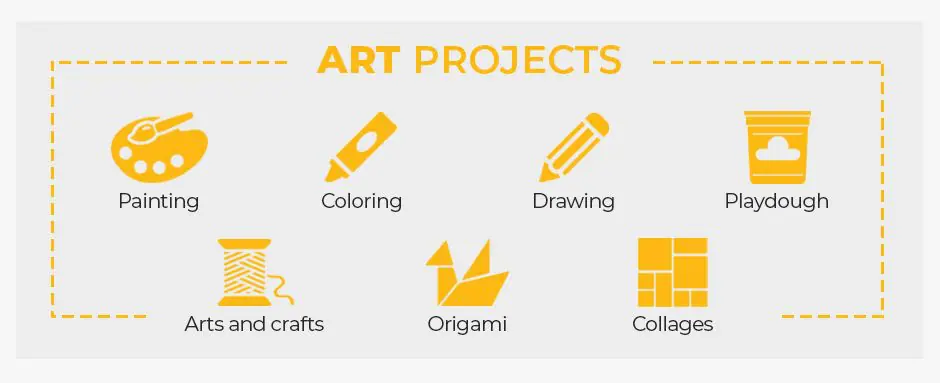
Art projects require a little more prep than other indoor recess activities, but students enjoy being creative and channeling their energy into a fun project.
Fun arts and crafts ideas include:
- Painting: Try letting students de-stress by painting. What youngster doesn’t love getting messy with finger paints or watercolors? Make sure you have a stash of old aprons on hand and lay down some newspaper on tables to keep the mess in your classroom to a minimum.
- Coloring: One of the easiest ways to keep kids occupied is to let them color. You can keep donated coloring books in the classroom or ask students to bring in coloring books and keep them in their desks for a rainy day.
- Drawing: Kids can free-draw if they wish, perhaps using how-to-draw books as guides. It’s amazing how a few initial ovals can turn into a horse with a little dedicated work! Or, you can do a directed-drawing activity with a small group or the whole class. There are some wonderful videos online for teaching kids to draw porcupines, kangaroos, smiling bowls of mac and cheese and more. The step-by-step process builds confidence and results in some irresistibly cute art.
- Playdough: Playdough is a sure-fire hit with small kids but can also be popular with older students. Make sure to use mats on your tables to keep the mess factor low.
- Arts and crafts: Providing kids with a table full of string, pasta, stickers, googly eyes and other odds and ends can result in small masterpieces, from macaroni necklaces to colorful pipe-cleaner animals. You may want to demonstrate a few ideas for students to give them some inspiration.
- Origami: For older students with the patience and fine motor coordination skills for folding, origami is an excellent way to keep hands and minds occupied. Guide students to books or videos that will help them find designs that excite them. Special colored origami paper is available, but you can always use squares of scrap paper, too.
- Collages: Offer students some old magazines, paper, glue and scissors, and let them create personalized collages. Suggest that they create collages with photos representing their personalities, from favorite foods and animals to phrases that best describe them.
- Journaling: Pass out notebooks and ask your students to draw a picture or write a few sentences about their day. Encourage them to reflect on what they did and how they felt. They can also decorate the page like a scrapbook.
2. Physical Activities and Games
Sure, art projects are fun, but sometimes your students need to get out of their seats and get moving. So what do you do for indoor recess when your kids need to get rid of some energy? To provide a fun recess while boosting students’ physical health and gross motor skills, try one of the indoors recess activities below. As a bonus, most of these games require no equipment.
Directed Dancing
A classroom dance party is a great way to get students active. Put on a dance video and let kids twist, jump and shake it off to the music. Ribbon or scarf dancing is also fun.
For a little more peer involvement, you can have your kids do freeze-dance games like the Wax Museum Challenge. In this activity, one student acts as the guard, standing at the front of the classroom with their back turned. Other students dance silently, getting as crazy as they wish — but when the guard turns around, they have to freeze! Any student the guard catches moving, talking or laughing is out.
Hopscotch
You don’t need to go outside to play hopscotch — just use masking tape to create a hopscotch outline on the floor and use a beanbag or other soft object instead of a rock.
Musical Chairs
Arrange your classroom chairs in a circle, find some upbeat music to start and stop, and you’re on your way to an easy game that will have kids scrambling and laughing together. To keep things from getting too crazy with the furniture, you can use items like hula-hoops for kids to stand in, removing one hoop each round.
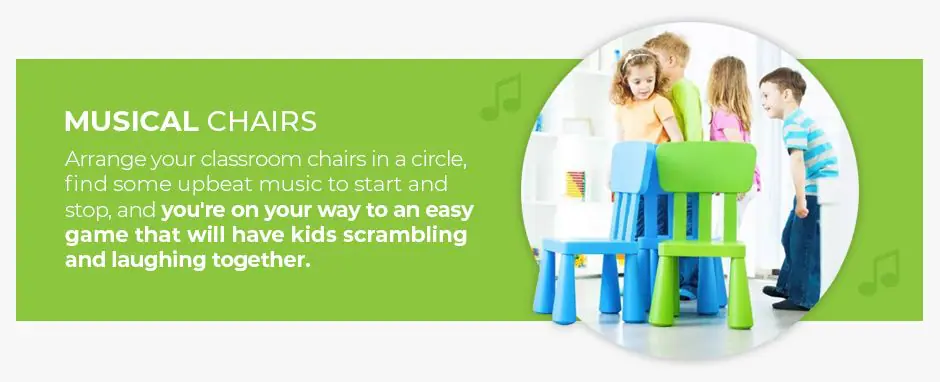
Tissue Box Skating
This outdoor-turned-indoor activity is borrowed from occupational therapy games, but it can also be great for indoor recess fun. It’s particularly appropriate when snow and ice are on the ground! Have parents collect old tissue boxes for your classroom. You can let your students choose their boxes and decorate these “skates” with stickers, markers, construction paper or whatever suits their fancy. Then let them “skate” around the classroom, perhaps incorporating games like Red Light, Green Light to work on listening and motor-planning skills.
Balloon Volleyball
Simply blow up some balloons, pass them out to your students, and let the “volleyball” game begin. This activity can be more of a free-for-all if your students can handle it, or you can create two teams for an organized back-and-forth game. For a twist, let the student who hits the balloon call out the name of another student, who must hit the balloon next.
Human Knot
Your students will love getting themselves out of a tangle in this fun game. Have kids stand in a tight circle and thrust their hands into the middle. They must grab a classmate’s hand in each of their own hands. They will then be knotted together in a human chain.
The goal is to unravel the chain by sliding over and under their classmates’ linked hands until they form a smooth circle. To make this game less challenging, you can have your class create two or three separate circles instead of one huge one.
Yoga
Yoga is a form of exercise that involves stretching, mindfulness, and breathing techniques through a variety of yoga poses. The combination of physical movement and mindfulness helps students refocus their attention and promotes academic readiness.
Ask your students to find an open area on the floor and guide them through various yoga poses. There are tons of kid’s yoga tutorials online that you can follow to make the process even easier.
Yoga is an excellent activity for children of all ages and is easy to do in a classroom. You can adapt the length of the session and the difficulty of the poses to your students’ ages and abilities.
Classic Movement-Oriented Games
These can include boxed games and schoolhouse staples, from Simon Says and Duck, Duck, Goose for younger students to Four Corners for older ones.
3. Board, Card & Other Seated Games
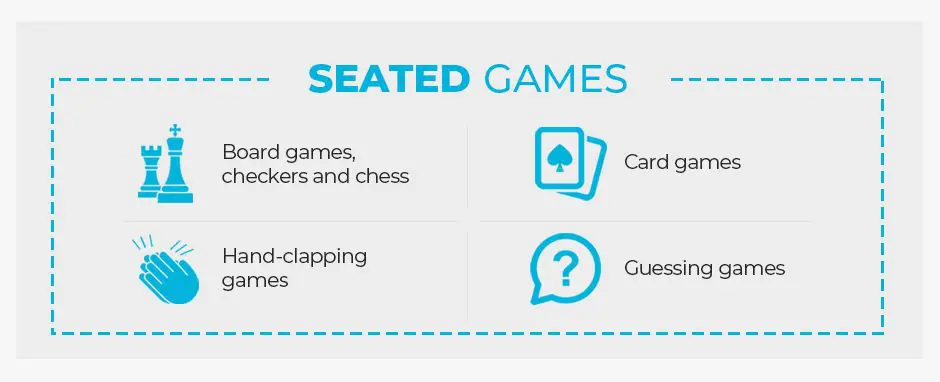
What are some great indoor recreational activities that don’t call for quite so much activity? For a calmer classroom, check out some of the games below. Though they’re more conducive to a controlled room, they’re sure to keep your students entertained.
- Board games, checkers, and chess: Classic board games can still provide hours of indoor fun. If your students are up for a challenge, you can let them play checkers or chess in pairs. These games are fun to play while promoting critical reasoning, thinking ahead, strategy and even social skills — it’s hard to play a game together without talking to your partner!
- Card games: Games such as Go Fish and Old Maid will provide many recesses full of fun, cooperative play.
- Hand-clapping games: Though hand jives aren’t great for maintaining a quiet classroom, they promote coordination and social skills, and they’re catchy and enjoyable for kids to boot. Familiar old chants like “Miss Mary Mack” and “Miss Susie” can help your students practice eye-hand coordination, rhythm, memorization and wordplay while interacting with friends.
- Guessing games: Classic games — like Heads Up, Seven Up; Who Has the Bean; and Doggy, Doggy, Where’s Your Bone? — use a little mystery to keep kids engaged and smiling. There’s always Pictionary, too, which allows kids to play and draw at the same time.
4. Educational Activities
There’s always room for a little learning in your students’ games! Indoor recess ideas for elementary school students can promote stealthy learning through play.
Kids’ Trivia Games
A stash of age-appropriate trivia cards in your classroom will keep students guessing and learning in their free time throughout the year.
Puzzles
Keep some easy, colorful puzzles in your classroom for kids to put together during recess. Puzzles featuring cute animal images or characters from popular kids’ movies and shows are always a hit! Kids will have fun while working on their spatial reasoning and manual dexterity.

Word or Number Games
Activities like word searches, crossword puzzles, and Sudoku are fun to do and easy to find. You can always play a game of hangman on the whiteboard, too! Try a counting game like One, Two, Buckle My Shoe for younger kids.
Pass the Chicken
For this game that’s perfect for classroom review, you’ll need to gather your students in a circle to pass around a squeaky rubber chicken. You give a task or a math problem, such as “name four dog breeds” or “name pairs of numbers that add to seven.” The student who started with the chicken has to answer.
The rest of the circle tries to pass the chicken around before the first student gets done. If the student cannot answer, they have to squeak the chicken loudly and do a chicken dance! If the student is successful, the child holding the chicken when the question is answered correctly goes next.
Cooking
Making food in the classroom is sure to entertain your students while also teaching them important life skills. Choose a simple recipe like no-bake cookies and let your students measure the ingredients, mix them together, and form the dough into balls. Cooking gives children the opportunity to practice their math, science, and fine motor skills. You could also choose something less messy like a dry trail mix with your student’s favorite snacks.
Building Blocks
Building blocks are an excellent resource for kids of all ages to build decision-making, coordination, creativity, motor and social skills. While playing with blocks helps younger students discover concepts like shape, size, matching and sorting, older kids can use them to practice their reasoning and communication skills.
There are several types of blocks your students can play with. You can provide students with various options, including wooden, cardboard, foam and plastic interlocking blocks. Before choosing the right blocks for your classroom, consider your students. Lighter cardboard and foam blocks may reduce the chance of injuries for younger kids, as block structures often topple. However, older students may be able to handle heavier wooden or interlocking plastic options.
The many cognitive skills kids can practice while playing with building blocks include making comparisons, following a pattern and logical reasoning. For example, younger students may learn that putting two blocks together will give them a larger surface to build upon. Meanwhile, their older peers might want to work together to create a specific structure or make the largest tower possible.
Regardless of your students’ ages, they’ll enjoy this creative activity by creating plans for their towers or making decisions as they go! Students of all ages will have fun working together to test their structure’s integrity and practice their reasoning skills by troubleshooting along the way. They’ll also build their social development by cooperating with classmates. Students will have to share blocks and communicate to build a structure. Their self-confidence will grow when they successfully execute an idea by working together!
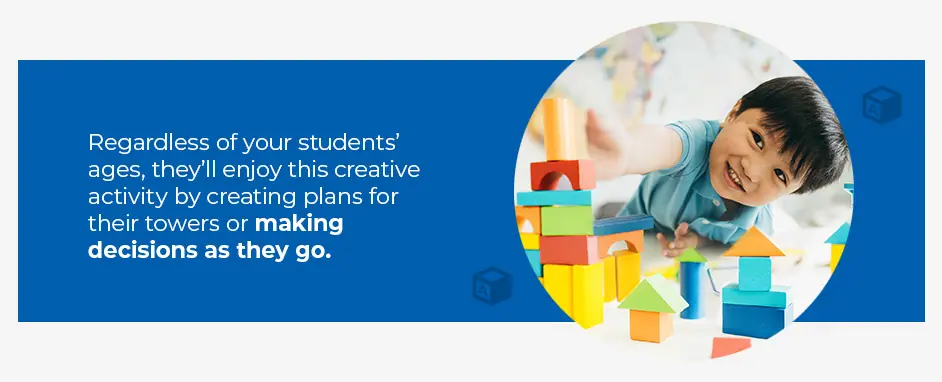
Playing with building blocks can introduce your students to basic math and science concepts like geometry, balance, space visualization, symmetry and gravity. Adults can use blocks to teach older students concepts like fractions, measuring and estimating, and they can educate younger kids about different shapes, numbers and colors. This activity can also boost kids’ self-esteem, as they’ll feel pride in their work and enjoy sharing it with adults and peers.
Your students can improve their ability to describe objects by explaining their tower’s size, color, position and shape. They can even practice storytelling by describing the building process, recounting their challenges and successes and how they had to work with others to produce a successful result. When kids share their experiences, they learn how to process their emotions while increasing their ability to communicate with others.
